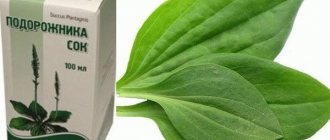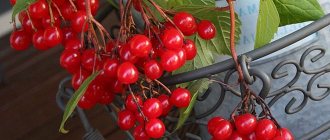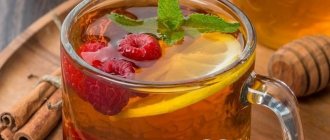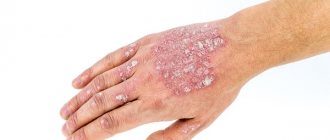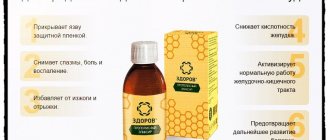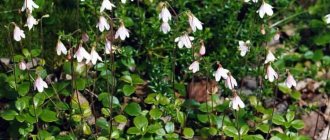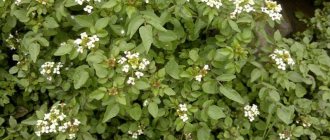Alternative medicine offers its own ways to cure bronchial asthma. Folk remedies for asthma are used as an addition to basic therapy. Treatment is carried out with the help of garlic, herbs, ginger, and soda, but medication is not canceled. All proposed methods of alternative treatment must be agreed with the attending physician. Is it possible to be cured of asthma forever by following good recipes? Let’s consider further.
Definition of bronchial asthma
Before we talk about how to recover from bronchial asthma, you need to understand what it is. Bronchial asthma is a non-infectious pathology characterized by an inflammatory process in the respiratory organs. The disease has several degrees of severity, patients experience difficulty breathing, a feeling of tightness in the chest, and suffer from bouts of continuous coughing.
The cause of bronchial asthma is the effect of irritating factors on the bronchial mucosa, causing inflammation and swelling. The treatment plan is drawn up individually depending on the phase of the disease and the characteristics of the body.
Viral diseases in asthma
Bronchial inflammation occurs under the influence of irritants, namely allergens.
However, in 70% of cases in adults and 85% in children, the disease is caused by various viruses. Asthma is usually not noticed because the disease is very similar to a cold. The signs are very similar, but the difference lies in the duration of the disease and the lingering symptoms. If after 10 days the cold does not go away and a persistent cough persists, which is accompanied by weakness, fever, headache and shortness of breath, then the complication of the bronchial type is obvious. Unfortunately, asthma is a fairly common disease. Based on the fact that the disease is chronic, it can bring discomfort and undesirable consequences throughout life.
Therefore, you need to know that colds in 85% contribute to exacerbation of asthma and aggravate symptoms.
Treatment methods
Patients are interested in ways to get rid of asthma forever. Treatment for asthma is aimed at reducing symptoms. It is impossible to get rid of bronchial asthma completely, but you can choose effective treatment that minimizes the number of attacks. Treatment of asthma without medications leads to worsening of the condition and progression of the pathology. Asthmatics need to take medications, see their doctor, and follow preventive measures throughout their lives. Therapeutic measures include:
- Use of leukotriene blockers, adrenergic agonists, corticosteroids
- Breathing exercises
- Treatment of bronchial asthma with folk remedies
The emphasis in basic therapy is on traditional treatment methods that prevent exacerbations. Breathing exercises are a preventive measure necessary during the period of remission and improvement of condition after an attack. Treatment with folk remedies is a secondary measure during remission and exacerbation. The remedies described in the recipes can provoke an allergic reaction; self-medication is unacceptable.
Herbal treatment
Herbal medicine offers a wide range of herbs that can help patients with asthma. Herbs for asthma and allergies can help relieve symptoms if taken carefully and in the right proportions.
Traditional medicine recipes usually use a set of several herbs that complement each other. To treat bronchial asthma, the selected plants must have anti-inflammatory, antispasmodic effects and improve sputum production.
Often used in assemblies:
- mother oil;
- marshmallows;
- Scots pine and Scots pine buds;
- hyssop;
- chamomile;
- Rosemary;
- violet grass and others.
These herbs have all the necessary properties to alleviate the patient’s condition, but it is quite difficult to replace all the plants used. In various combinations, they can increase the effectiveness of drug therapy.
Coltsfoot
Mother oil is used as an infusion:
- Mix the leaves and flowers of the plant in equal proportions. They should be dried and crushed.
- Pour a teaspoon of the mixture with a glass of boiling water and let it brew for about 60 minutes.
- Before use, the resulting infusion must be filtered.
- Drink a quarter glass 3-4 times a day.
The upper uterus is also used as part of the collection. You need to mix 20 grams of the following herbs:
- common thyme;
- mother oil;
- violet tricolor;
- elecampane;
- common anise.
The patient should take this collection in the form of a warm infusion orally, a quarter glass three times a day. This infusion has anti-inflammatory properties.
Uterus uterus, despite its beneficial properties, should be taken with caution by patients. Before the age of two, it is better not to treat with herbs at all, especially on your own; this is possible only after consultation with a doctor.
Pregnant women and nursing mothers should also not take mother and stepmother decoction. In other cases, taking a remedy from this plant can last no more than 6 weeks a year, the recommended course is 2-3 weeks. Long-term use causes nausea, diarrhea, abdominal pain, and fever. Careful dosage compliance is required.
Another recipe with mother oil includes equal parts of the leaves of this plant, pine buds and sycamore leaves.
- Take 40 grams of the mixture per glass of cold water.
- Leave to infuse for 2 hours.
- Then boil the infusion for about 5 minutes and set aside for another 15 minutes.
- Strain the broth before use. Drink a third of a glass throughout the day.
Hyssop officinalis
The use of medicinal hyssop for bronchial asthma has been known for a long time. Before talking about its beneficial properties, it is necessary to warn about contraindications to its use. It is strictly forbidden to use hyssop for people with kidney disease, high acidity of gastric juice and epilepsy. Herbal treatment is contraindicated during pregnancy and breastfeeding. Hyssop should be used with caution in patients with arterial hypertension.
The medicinal properties of hyssop in the treatment of bronchial asthma are associated with its anti-inflammatory and expectorant effects. To prepare infusions and decoctions, use ground herbs, or together with flowers.
The infusion is prepared according to the recipe:
- Take 4 tablespoons A teaspoon of finely chopped greens.
- Pour 1 liter of boiling water into a thermos.
- After 5 minutes, close the future infusion with a lid and set aside for an hour.
- Drain the water and pour everything back into the thermos.
- Take half a glass of warm infusion 20 minutes before meals.
To prepare the decoction you will need 2 teaspoons of dried herbs and flowers, pour 400 ml of boiling water, bring to a boil and set aside for 5 minutes. Then strain. You need to drink this decoction half a glass a day, either 30 minutes before meals or an hour after.
Other plants
Cranberry decoction for asthma is used as an expectorant and to thin mucus. Grate two teaspoons of berries and pour a glass of warm boiled water. The mixture should be boiled for 10-15 minutes, then brought to a boil and simmered over low heat for 20 minutes. The broth was then cooled and filtered. If necessary, add boiled water to the volume of the glass. Take the decoction in small sips throughout the day.
Marshmallow has a calming effect on coughs. You need to take 4 tablespoons of marshmallow herb and pour 500 ml of boiling water. Leave to steep for about an hour. Drink half a glass of infusion 20 minutes before meals.
Marshmallows are also effective in combination with thyme. Herbs are mixed in equal proportions. Then pour 4 teaspoons of the harvest into 200 ml of boiling water and let it brew for 2 hours. Then strain the infusion and drink it in three doses throughout the day.
- Take pine buds, sycamore leaves and mother oil in equal parts.
- Pour four teaspoons of the harvest into a glass of cold water.
- Leave to infuse for two hours.
- Bring to a boil, let sit for 15 minutes, strain.
- The decoction obtained in this way is enough for 3 doses per day.
For those who do not want to collect herbs and make preparations themselves, there are ready-made products in which the plants are already packaged in the required proportions. Collection chest No. 4 is sold in pharmacies. Includes:
- chamomile flowers;
- marsh rosemary shoots;
- calendula flowers;
- violet tricolor;
- peppermint leaves;
- licorice roots.
Its herbs have expectorant and anti-inflammatory effects. To obtain from the collection, you need to make an infusion. It is prepared as follows:
- Take 9 grams of the crop and pour a glass of hot water over it.
- The infusion should be heated in a water bath for a quarter of an hour under a closed lid.
- Then it should be cooled for 45 minutes and strained. Fill up to 200 ml with water.
- Adults take a third of a glass before meals three times a day. This collection is contraindicated for pregnant and lactating women. It should be used with caution in children. You should not take cough suppressants at the same time, as this may interfere with sputum production.
When are folk remedies allowed?
Doctors do not prohibit treating asthma with folk remedies at home. Non-traditional methods of treating asthma are especially effective in the initial stage of the disease. With progression or exacerbation, the effect is only possible in tandem with medications. Non-traditional methods of therapy can have a positive effect, subject to certain conditions. Traditional methods require compliance with the rules and are allowed:
- After diagnosis
- When a medical consultation has been carried out and the consent of the attending physician has been obtained
- Along with taking medications
- When there are no contraindications
Treatment and prevention of bronchial asthma at home
In order to prevent another attack of bronchial asthma from recurring for as long as possible, it is recommended to adhere to the following tips at home:
- use breathing exercises, which will improve the process of gas exchange between blood and air, which will eliminate respiratory failure;
- carry out mustard wraps and hardening with a contrast shower;
- follow a protein-vegetable diet;
- use decoctions of breast milk, viburnum with honey, plantain or garden turnip, as well as tinctures of celandine or St. John's wort herb
- mild attacks can be calmed with lingonberry tea or hawthorn tea.
It is recommended to treat bronchial asthma with folk remedies only in combination with medications prescribed by a doctor. You should not neglect your health and use only “grandmother’s” methods, as the disease can be life-threatening.
List of contraindications
It is impossible to treat bronchial asthma with folk remedies if:
- Atopic (allergic asthma)
- Pregnancy and breastfeeding period
- Individual intolerance
- Concomitant diseases
Read the recipe ingredients carefully. Do not use them when a flare-up begins.
For adults
Home therapy for asthma in adults is less likely to be accompanied by side effects. You can use one of the methods, or several. The choice depends on the manifestations of symptoms, severity and causes of the disease. In addition to garlic treatment, the following are acceptable:
- Inhalations
- The use of herbal infusions or decoctions
- Alcohol tinctures
- Herbal infusions
The course duration ranges from several months to a year. If the patient experiences frequent exacerbations, medical supervision is required.
For children
Treatment of asthma in children with folk remedies is more effective due to the flexibility of the immune system. Doctors are able to quickly reduce the frequency of attacks and make the immune system stronger. In childhood, the immune system is more malleable, so strengthen the immune system and reduce the frequency of attacks with a short course of therapy. For the treatment of bronchial asthma in children, the following are acceptable:
- The use of decoctions or herbal infusions
- Soda solutions for gargling
- Use of honey mixtures
If frequent exacerbations occur, medical consultation is necessary. Otherwise, the child risks developing swelling of the larynx as a consequence of an allergic reaction.
Home remedies for asthma can be very effective
At home, you can quickly prepare quite a lot of medications yourself that will help keep the disease under control and prevent it from developing. Spasms, exhausting cough, shortness of breath, unpleasant sputum - all this will not bother you, you just need to behave correctly.
Folk medicines are completely safe, and if a person does not suffer from diseases of the gastrointestinal tract, then they can be taken every day. But those who, in addition to asthma, also have a stomach ulcer, gastritis, liver or intestinal diseases, will have to be very careful and not use medicines based on garlic, ginger and other hot seasonings. Young children must have their own diet, and these recipes are not suitable for them either.
Ginger
This wonderful spice is not only very tasty, but is also an excellent cure for asthma in almost its pure form. Studies have shown that ginger contains many substances that reduce inflammation in the bronchi and improve their air permeability. In addition, they are able to enhance the effect of many modern medications that relieve bronchospasms.
Homemade ginger-based remedies are very easy to prepare and are generally delicious treats. Here are some recipes.
- Mix ground ginger in water (you need 1 teaspoon of powder and one and a half cups of boiled water) and take one teaspoon of this mixture at night. This surprisingly simple remedy will help to significantly reduce the frequency of night attacks, which cause the greatest inconvenience to both the patient and his loved ones.
- Chop a three-centimeter piece of root into small pieces, pour them into boiling water and let simmer for about five minutes. Cool and the medicine is ready.
- Boil a cup of water and add 1 teaspoon of fenugreek seeds to it. Add one teaspoon each of ginger juice and honey to the broth. Drink this mixture morning and evening.
And if you have a strong stomach, then you can simply eat small pieces of fresh ginger with salt or sugar.
Garlic
In the initial stages of development, as]garlic[/anchor] is a very effective medicine. To soften its pungency, you can use milk. The recipe for the medicine is as follows: boil a cup of milk with 2-3 cloves of garlic. Cool to a pleasant temperature and drink.
Eucalyptus
The oil of this Australian tree has a strong decongestant effect, which is why it is widely used to treat asthma.
- Place a couple of drops of oil on a towel and place it next to the head of the bed. This way you can breathe in the healing oil all night long.
- To inhale, place 3-4 drops of oil into a pan of boiling water and breathe over the steam. Be careful not to burn your face or eyes with the steam.
Traditional recipes against asthma
Patients are forced to resort to “grandmother’s” methods due to a feeling of despair and disappointment from drug therapy. For many, it is a difficult fact that asthma cannot be cured. Patients are looking for a way to get rid of asthma forever without the help of doctors, and the passion for traditional therapy is becoming excessive. Even the most effective folk remedies that help other patients must be agreed upon with the attending physician. The components present in them can provoke bronchospasms.
Herbs for asthma require special care if a child is being treated. Children often suffer from allergies, and herbs are one of the irritating factors.
The course of the disease is individual for patients; attacks may occur frequently or occur rarely; if exacerbations occur more than once a month, long-term, intensive basic therapy is prescribed, with an increased dosage of drugs. For the purpose of prevention, their use is short-term and in a minimal dose. Among the folk remedies for children, infusions containing alcohol are not recommended; before treatment, you need to take an allergen test so as not to provoke an allergic reaction with herbs.
Based on breast collection
Medicine manufacturers produce breast teas containing herbs. Each of them is equipped with a number, which indicates the composition of the raw materials. For asthmatics, the fourth breast mixture is recommended; it contains:
- Roots of valerian, licorice, blue cyanosis
- Peppermint
- Pharmaceutical chamomile
- Five-lobed motherwort
- St. John's wort
Asthma - symptoms and types of disease
The most typical and striking symptom of asthma is an attack of suffocation.
In addition, this disease can manifest itself in the form of shortness of breath or severe cough. Doctors distinguish two types of asthma: allergic and non-allergic. The first appears upon contact with an irritant substance. Its attacks are accompanied by hives, runny nose and are often seasonal.
The non-allergic type of bronchial asthma is more dangerous and severe. An attack of suffocation can be triggered by any external irritant (cold air, perfume, tobacco smoke, physical activity).
Risk factors
The main physiological cause of bronchial asthma is an inadequately acute protective reaction of the respiratory tract to external stimuli. Under their influence, the bronchi narrow and secrete a large volume of mucus. As a result, the flow of air into the lungs sharply decreases, causing a state of suffocation.
Doctors identify several risk factors leading to the development of this disease:
- 30% of cases of asthma are caused by a genetic factor (heredity);
- in second place (25% of the total incidence) is professional activity associated with harmful production conditions. Where the respiratory system is exposed to toxic gases and dust every day, the likelihood of bronchial asthma is very high.
- Since in our time allergenic substances are found not only at work, but also in everyday life, doctors attribute the remaining 45% of asthmatic manifestations to household factors and the environment.
The range of respiratory irritants that can lead to asthma is quite wide. In addition to pollen from flowering plants and animal hair, this includes food, street and house dust. Certain types of chemical medications, particularly aspirin, can also trigger an asthma attack.
Preventing asthma
Bronchial asthma is a sticky and difficult to treat disease. Therefore, everyone who is at risk or has already been attacked should actively use prevention methods. There are only two of them: breathing exercises and diet. Without causing damage to the body, these methods provide a real positive effect to everyone who persistently and systematically applies them. Read: Bronchial asthma - treatment with honey
The following exercise helps prevent and eliminate bronchospasm: inhale air through your nose while protruding your stomach. Exhale through the mouth, drawing in the stomach. The breathing rhythm when performing this exercise should be slow, and the inhalations and exhalations should be shallow. When exhaling, you first need to pronounce the sounds “SH” or “Z”, and then “E” or “A”.
The following exercise is easy to remember and perform: standing or sitting, alternately close one nostril with your finger and inhale. Exhale air through the other nostril. Duration 3-5 minutes.
The therapeutic diet for asthma involves an increase in plant proteins and vegetables in the diet, exclusion of fatty foods, a minimum of preservatives and other “chemicals” in foods.



